White-tailed Deer
- December 29, 2023
- 0 comment
The White-tailed Deer (Odocoileus virginianus) is a graceful and iconic species of deer native to North America. Recognized for its distinctive tail, which is brown on top and white underneath, this deer species is easily identifiable in the wild. Adult white-tailed deer typically exhibit a reddish-brown coat during the warmer months, transitioning to a grayish-brown hue in winter. One of the most notable features is the white underside of their tails, which they raise as an alert signal. The males, known as bucks, are characterized by their impressive antlers, which they shed and regrow annually.
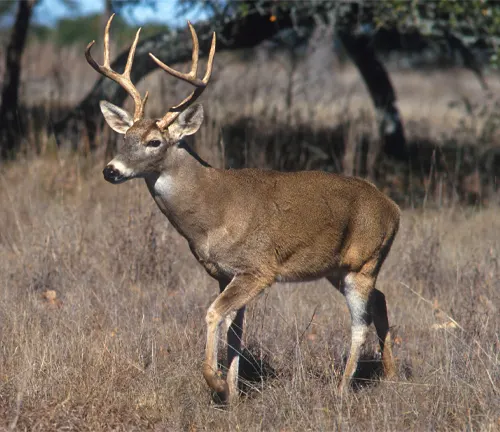
In terms of physical description, white-tailed deer are medium to large-sized mammals, with males generally being larger than females. Bucks can weigh anywhere from 130 to 300 pounds, while does usually range from 90 to 200 pounds. Standing at the shoulder, their height ranges from about 36 to 40 inches. Their keen senses, including excellent vision and acute hearing, contribute to their ability to detect predators and navigate their surroundings.
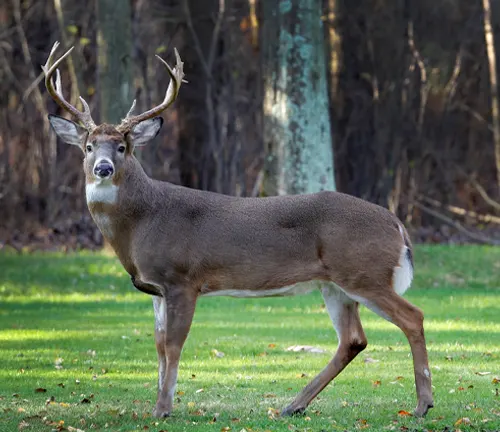
The species is incredibly adaptable and has a vast range, spanning from southern Canada throughout the United States and into parts of Central America. White-tailed deer are versatile in their habitat preferences, thriving in diverse environments such as forests, grasslands, and even suburban areas. They are herbivores, primarily feeding on vegetation such as leaves, twigs, fruits, and acorns.
Despite their seemingly tranquil presence, white-tailed deer can pose health and safety concerns. Vehicle collisions with deer are a common issue, especially in areas where urban development encroaches on their habitats. Additionally, white-tailed deer can transmit diseases like Lyme disease through ticks, making it important for humans to take precautions when venturing into deer-populated areas. Conservation efforts aim to strike a balance between preserving their natural habitats and minimizing conflicts with human activities to ensure the continued well-being of this iconic species.
| Aspect | Description |
|---|---|
| Scientific Name | Odocoileus virginianus |
| Identification | Recognizable by white underside of tail, antlers on males |
| Physical Description | Medium to large-sized mammal, reddish-brown coat, grayish-brown in winter, males have antlers |
| Size | Bucks: 130 to 300 pounds, Does: 90 to 200 pounds |
| Height (at shoulder) | 36 to 40 inches |
| Range | North America, from southern Canada to Central America |
| Habitat | Diverse habitats including forests, grasslands, suburbs |
| Diet | Herbivores, feeding on leaves, twigs, fruits, acorns |
| Adaptability | Highly adaptable to various environments |
| Senses | Excellent vision, acute hearing |
| Safety Concerns | Vehicle collisions, transmission of diseases (e.g., Lyme disease) |
| Conservation Status | Varied across regions, management for balanced coexistence |
| Notable Behavior | Alert signal: Raising white underside of tail |
A Comprehensive Exploration
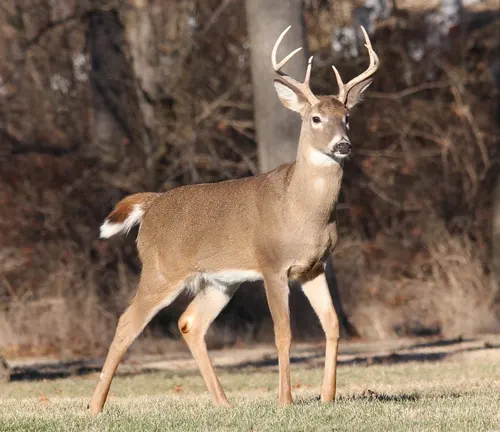
General Biology
The White-tailed Deer, a symbol of North American wildlife, captivates with its intricate biology. As a medium to large-sized mammal, it belongs to the Cervidae family and is scientifically known as Odocoileus virginianus. Understanding its general biology unveils the intricacies of its anatomy, physiology, and adaptations that enable it to thrive across diverse landscapes.
Reproduction
The life cycle of the White-tailed Deer encompasses a fascinating journey of reproduction. Typically, the rutting season marks the peak of mating activity, with bucks engaging in displays of dominance and courtship. Female deer, known as does, give birth to one or two fawns after a gestation period of about six and a half months. Exploring the reproductive habits of these creatures provides insights into their role in maintaining healthy populations.
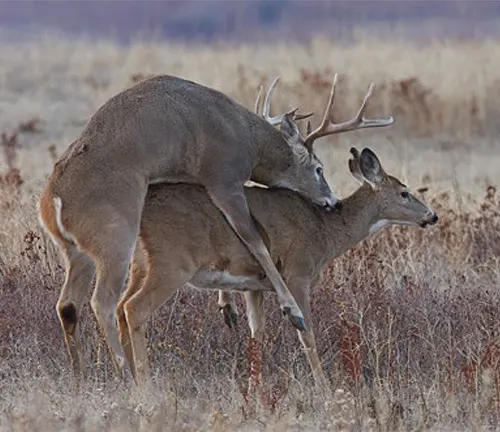
Behavior
The behavior of White-tailed Deer reflects a delicate balance between survival instincts and social dynamics. These creatures are known for their keen senses, including acute hearing and excellent vision. Their behavior varies throughout the year, influenced by factors such as the rutting season, availability of food, and environmental conditions. Observing their behavior sheds light on their adaptability and strategies for navigating their surroundings.
Nesting/Denning Cover
When it comes to shelter, White-tailed Deer exhibit a preference for specific nesting and denning cover. Understanding their choices in terms of shelter, whether it be thick vegetation or wooded areas, provides a glimpse into their habitat preferences and the importance of secure spaces for raising their young.

Habitat
White-tailed Deer are highly adaptable, occupying a range of habitats from forests and grasslands to suburban areas. Exploring their habitat preferences and the factors that influence their distribution offers valuable insights into the delicate ecological balance they maintain within their environments.
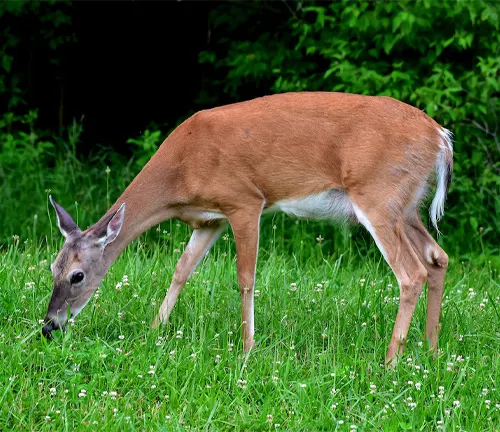
Food Habits
As herbivores, White-tailed Deer have a diverse diet consisting of leaves, twigs, fruits, and acorns. Examining their food habits provides a deeper understanding of their role in shaping vegetation dynamics and their reliance on specific plant species for sustenance.
Voice, Sounds, Tracks, and Signs
Communication among White-tailed Deer involves a repertoire of vocalizations, sounds, tracks, and signs. From the grunts and snorts that convey different messages to the distinct tracks they leave behind, decoding these cues offers a window into their social interactions, territorial displays, and the ways they navigate their surroundings.
A Closer Look at the Damage
Damage Identification
The majestic White-tailed Deer, a symbol of grace and beauty in the wild, also carries the weight of unintended consequences as its population interacts with human environments. Identifying the various forms of damage caused by these creatures becomes crucial for understanding their impact on ecosystems. From natural landscapes to cultivated fields and even man-made structures, White-tailed Deer can leave a distinctive mark, prompting a closer examination of their role in our shared spaces.
Damage to Landscapes
The serene landscapes that we cherish are not immune to the influence of White-tailed Deer. These creatures, while roaming in search of sustenance, can inadvertently alter the natural balance of vegetation. Their voracious appetite for foliage poses a threat to the diversity of plant species, impacting the overall health of ecosystems. As we delve into the consequences of their presence, it becomes evident that the scenic beauty we admire may be at risk without careful management and conservation efforts.
Damage to Crops and Livestock
In the realm of agriculture, the impact of White-tailed Deer extends beyond natural habitats. These herbivores, driven by their need for sustenance, can wreak havoc on crops, posing a significant challenge for farmers. The delicate balance between human livelihoods and wildlife preservation is tested as these deer encroach on cultivated lands, leading to economic losses and potential conflicts. Exploring the intricacies of mitigating damage to crops and finding harmonious coexistence becomes imperative for sustainable agriculture practices.

Damage to Structures
The influence of White-tailed Deer is not limited to landscapes and agriculture; it extends to the very structures we build. As urbanization encroaches on their habitats, these creatures may find themselves in close proximity to human dwellings. This proximity can result in unforeseen challenges, with deer causing damage to structures such as gardens, fences, and even vehicles. Understanding the dynamics of this interaction is essential for developing strategies that balance the preservation of our living spaces with the conservation of these iconic creatures.
Strategies for White-tailed Deer Damage Prevention and Control
Damage Prevention and Control Methods
The harmonious coexistence between humans and White-tailed Deer necessitates thoughtful approaches to prevent and manage potential damages. This article explores a range of strategies aimed at mitigating the impact of these majestic creatures on landscapes, crops, and structures. From habitat modification to exclusion and various deterrent methods, understanding these control measures is essential for striking a balance between conservation and human interests.
Habitat Modification
One proactive approach to managing White-tailed Deer impact is through habitat modification. This involves manipulating the environment to make it less attractive or accessible to deer. Careful consideration of plant choices, fencing, and land management practices can help create a landscape that minimizes the appeal of certain areas to deer, promoting a healthier balance between the ecosystem and human needs.
Exclusion
Creating physical barriers is a practical method to prevent deer from encroaching on specific areas. Fencing, when strategically designed and implemented, can be an effective tool for excluding deer from gardens, crops, and other vulnerable spaces. Understanding the nuances of fencing types and their placement is crucial for maximizing the efficacy of exclusion as a damage prevention strategy.
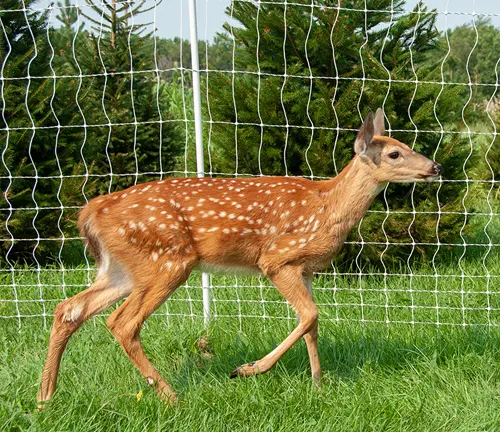
Frightening Devices
Incorporating frightening devices into the landscape can deter White-tailed Deer by capitalizing on their sensitivity to unexpected stimuli. From motion-activated lights to noise-emitting devices, these tools aim to startle deer, encouraging them to avoid the protected areas. Exploring the effectiveness and ethical considerations of these devices is paramount in their responsible use.
Repellents
Various repellents can be employed to dissuade White-tailed Deer from foraging on specific plants or entering protected zones. These may include chemical deterrents, such as scent-based repellents, or even natural substances that deer find unappealing. Understanding the limitations and application techniques of repellents is essential for integrating them into a comprehensive damage prevention strategy.
Toxicants
While less commonly employed due to ethical and environmental concerns, the use of toxicants is a method of last resort for some. These substances are designed to deter deer through aversive effects. However, their use demands meticulous consideration of potential risks and consequences, highlighting the importance of responsible and regulated application.
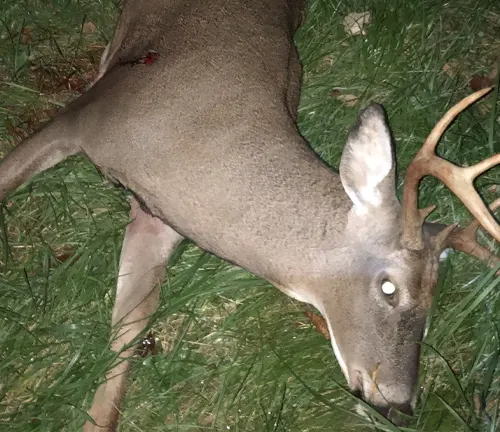
Shooting
In certain contexts, controlled and ethical shooting can be a method of population management. This approach requires precision and adherence to wildlife conservation guidelines to ensure a balanced and sustainable deer population. Responsible hunting practices can contribute to ecological equilibrium while addressing specific damage concerns.
Trapping
Trapping provides a targeted approach to capturing and relocating deer. This method demands a deep understanding of deer behavior and responsible trapping techniques. When executed with care and adherence to ethical standards, trapping can be a humane and effective means of relocating deer away from vulnerable areas.
Different Species
Virginia White-tailed Deer
(Odocoileus virginianus virginianus)
This is the nominate subspecies and is found in the eastern United States. It is the most widely distributed and well-known variety of White-tailed Deer.
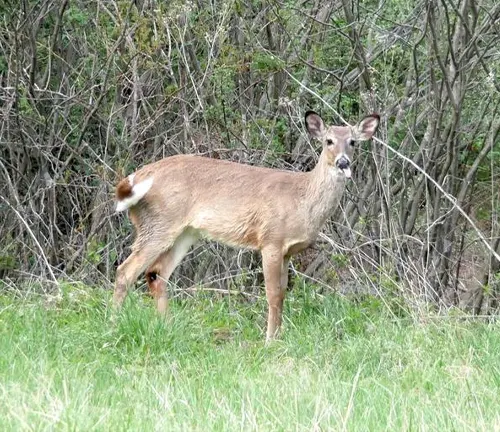
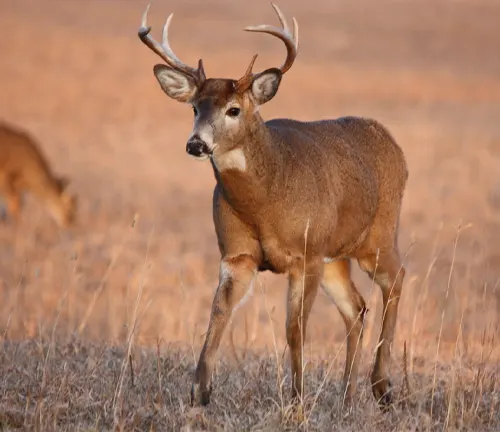
Northern White-tailed Deer
(Odocoileus virginianus borealis)
Inhabiting the northern parts of the United States and Canada, this subspecies has adapted to colder climates and displays variations in coat color and size compared to its southern counterparts.
Key Deer
(Odocoileus virginianus clavium)
Endemic to the Florida Keys, the Key Deer is a smaller subspecies and is listed as an endangered species. Conservation efforts focus on preserving its unique habitat and ensuring its survival.
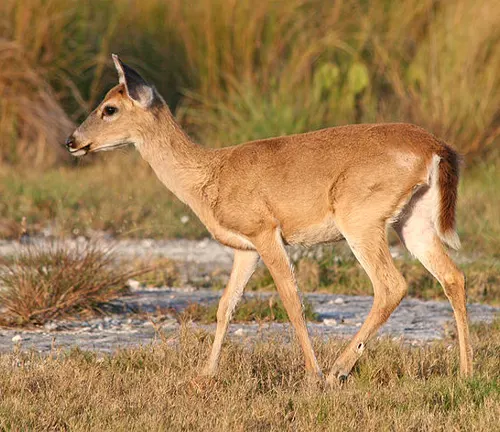
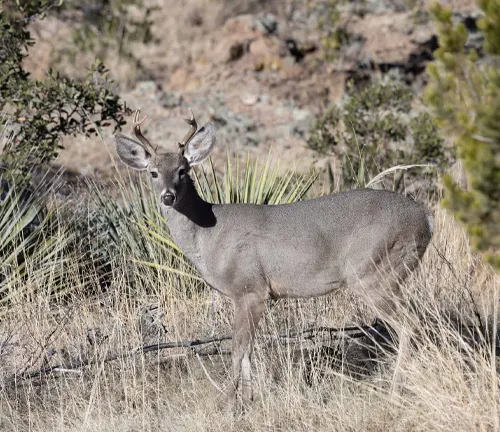
Coues’ White-tailed Deer
(Odocoileus virginianus couesi)
Found in the southwestern United States and Mexico, this subspecies is notably smaller than other White-tailed Deer and is adapted to arid environments.
Texas White-tailed Deer
(Odocoileus virginianus texanus)
Inhabiting Texas and parts of Mexico, this subspecies is characterized by its larger body size and antlers. It has adapted to diverse habitats, including forests, grasslands, and deserts.

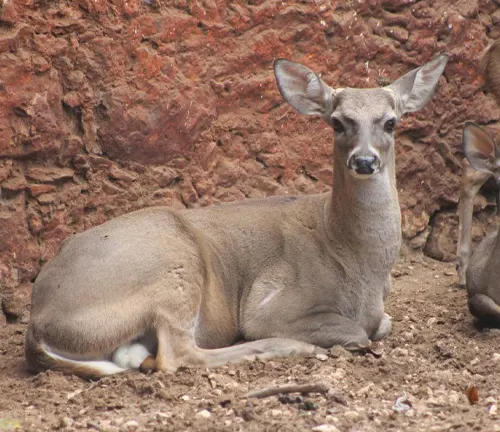
Yucatan White-tailed Deer
(Odocoileus virginianus yucatanensis)
Indigenous to the Yucatan Peninsula in Mexico, this subspecies has specific adaptations to the tropical forests and coastal areas of the region.
South Florida White-tailed Deer
(Odocoileus virginianus osceola)
Inhabiting the southern parts of Florida, this subspecies is adapted to the unique ecological conditions of the region, including the Everglades.
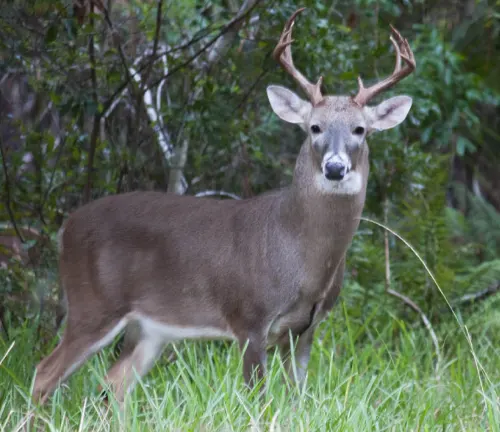
Frequently Asked Questions (FAQs)
- What is a White-tailed Deer?
White-tailed Deer (Odocoileus virginianus) is a species of deer native to North and Central America, known for its distinctive tail and antlers in males. - Where do White-tailed Deer live?
They have a broad habitat range, inhabiting forests, grasslands, and even suburban areas. Their distribution spans from southern Canada through the United States and into parts of Central America. - What do White-tailed Deer eat?
White-tailed Deer are herbivores, feeding on a variety of vegetation, including leaves, twigs, fruits, and acorns. - How big do White-tailed Deer get?
Adult males (bucks) can weigh between 130 to 300 pounds, while females (does) typically range from 90 to 200 pounds. Their height at the shoulder is around 36 to 40 inches. - Do female White-tailed Deer have antlers?
No, antlers are typically present only in males. Bucks grow and shed antlers annually, with the size and complexity often increasing with age. - What is the lifespan of a White-tailed Deer?
In the wild, their lifespan is typically around 4 to 6 years, although some individuals can live longer. Various factors, including predation and human activities, influence their longevity. - How do White-tailed Deer communicate?
They communicate using body language, vocalizations, and scents. The white underside of their tail is raised as an alert signal, and they produce various vocalizations, including grunts and snorts. - Are White-tailed Deer dangerous?
Generally, White-tailed Deer are not considered dangerous to humans. However, collisions with vehicles can pose risks, and during the breeding season (rut), bucks may become more aggressive. - Do White-tailed Deer carry diseases?
Yes, White-tailed Deer can carry diseases such as Lyme disease, transmitted through ticks. Humans need to take precautions when in deer-populated areas. - How can you prevent deer damage to gardens and crops?
Prevention methods include fencing, repellents, and habitat modification. These strategies aim to deter deer from foraging on plants and crops. - Is hunting of White-tailed Deer legal?
Hunting is regulated and legal in many regions, with specific seasons and quotas. Managed hunting helps control deer populations and supports wildlife conservation efforts. - What are some conservation efforts for White-tailed Deer?
Conservation initiatives focus on preserving natural habitats, managing deer populations, and addressing human-wildlife conflicts to ensure the long-term well-being of these iconic species.





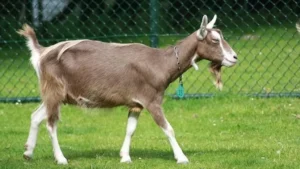
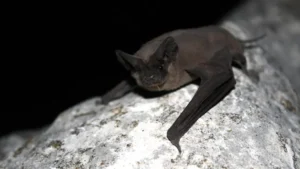
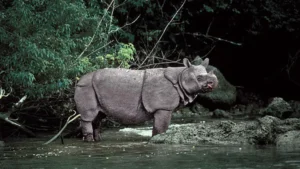
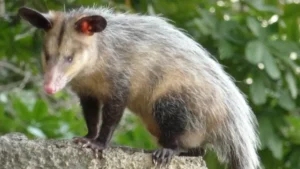
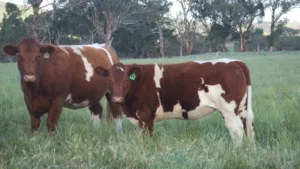
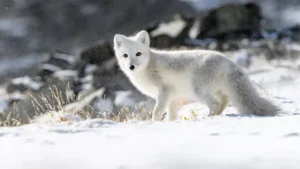

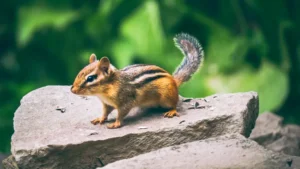

Leave your comment